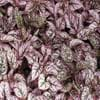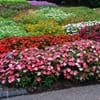Life Span
Perennial
Perennial
Type
Tender Perennial
Perennial
Origin
Latin America and the Caribbean
California
Types
Not Available
Not Available
Habitat
Humid climates, Warmer regions
Chaparral, River side
USDA Hardiness Zone
10-15
7-10
Sunset Zone
H1, H2, 24
H1, 4, 5, 6, 7, 8, 9, 10, 11, 12, 14, 15, 16, 17, 18, 19, 20, 21, 22, 23, 24
Habit
Thicket/Colonizing
Upright/Erect
Minimum Width
Not Available
Flower Color
White, Yellow, Red, Green, Orange, Orange Red
White, Yellow
Flower Color Modifier
Bicolor
Bicolor
Fruit Color
Red, Orange
Green, Tan
Leaf Color in Spring
Green
Gray Green
Leaf Color in Summer
Green, Dark Green
Gray Green
Leaf Color in Fall
Dark Green
Gray Green
Leaf Color in Winter
Light Green
Light Green
Leaf Shape
Ovate
Lance shaped
Plant Season
Spring, Summer, Fall, Winter
Spring, Summer
Sunlight
Full Sun, Partial Sun, Partial shade
Full Sun
Growth Rate
Very Fast
Fast
Type of Soil
Loam, Sand
Loam, Sand
The pH of Soil
Acidic, Neutral, Alkaline
Neutral, Alkaline
Soil Drainage
Average
Well drained
Bloom Time
Indeterminate
Early Spring, Spring, Late Spring, Early Summer, Summer
Tolerances
Drought
Drought
Where to Plant?
Container, Ground, Pot
Ground
How to Plant?
From Rhizomes, Micropropagation
Cuttings, Seedlings
Plant Maintenance
Low
Medium
Watering Requirements
Average Water Needs
Needs watering once a week, Water well when planted
In Summer
Lots of watering
Lots of watering
In Spring
Moderate
Moderate
In Winter
Average Water
Average Water
Soil pH
Acidic, Neutral, Alkaline
Neutral, Alkaline
Soil Type
Loam, Sand
Loam, Sand
Soil Drainage Capacity
Average
Well drained
Sun Exposure
Full Sun, Partial Sun, Partial shade
Full Sun
Pruning
Cut or pinch the stems, Remove damaged leaves, Remove dead branches, Remove dead leaves
prune nearly to the ground in late fall
Fertilizers
Fertilize every two months
organic fertlizers
Pests and Diseases
Mealybugs, Nematodes, Red blotch, Soft scales
Verticillium Wilt
Plant Tolerance
Salt
Drought
Flower Petal Number
Not Available
Single
Showy Foliage
Yes
Not Available
Foliage Texture
Coarse
Not Available
Foliage Sheen
Glossy
Not Available
Invasive
Sometimes
Sometimes
Attracts
Hummingbirds, Insects
Bees, Birds, Butterflies
Allergy
Toxic
no allergic reactions
Aesthetic Uses
Beautification, Cottage Garden
Showy Purposes
Beauty Benefits
Not Available
Not Available
Environmental Uses
Food for birds
Air purification
Medicinal Uses
Healing
antimicrobial, Astringent, Gum Problems, Stomach pain
Part of Plant Used
Root, Seeds
Flower Stalk
Other Uses
Florist trade and landscaping
Used as Ornamental plant
Used As Indoor Plant
No
No
Used As Outdoor Plant
Yes
Yes
Garden Design
Bedding Plant, Container, Cutflower, Feature Plant, Groundcover, Mixed Border, Tropical
Feature Plant, Groundcover, Mixed Border, Wildflower
Botanical Name
HELICONIA psittacorum 'Lady Di'
ROMNEYA coulteri
Common Name
Heliconia, Lady Di Heliconia, Parakeet Flower
Matilija Poppy
In Hindi
Heliconia
Matilija Poppy
In German
Heliconia
Matilija Poppy
In French
Heliconia
Matilija Poppy
In Spanish
Heliconia
Matilija amapola
In Greek
Heliconia
Matilija παπαρούνας
In Portuguese
Heliconia
Matilija Poppy
In Polish
Heliconia
Matilija Poppy
In Latin
Heliconia
Matilija Poppy
Phylum
Magnoliophyta
Magnoliophyta
Class
Liliopsida
Magnoliopsida
Order
Zingiberales
Papaverales
Family
Heliconiaceae
Papaveraceae
Clade
Angiosperms, Commelinids, Monocots
Angiosperms, Eudicots
Tribe
Not Available
Not Available
Subfamily
Not Available
Papaveroideae
Season and Care of Heliconia and Matilija Poppy
Season and care of Heliconia and Matilija Poppy is important to know. While considering everything about Heliconia and Matilija Poppy Care, growing season is an essential factor. Heliconia season is Spring, Summer, Fall and Winter and Matilija Poppy season is Spring, Summer, Fall and Winter. The type of soil for Heliconia is Loam, Sand and for Matilija Poppy is Loam, Sand while the PH of soil for Heliconia is Acidic, Neutral, Alkaline and for Matilija Poppy is Neutral, Alkaline.
Heliconia and Matilija Poppy Physical Information
Heliconia and Matilija Poppy physical information is very important for comparison. Heliconia height is 60.00 cm and width 150.00 cm whereas Matilija Poppy height is 120.00 cm and width Not Available. The color specification of Heliconia and Matilija Poppy are as follows:
Heliconia flower color: White, Yellow, Red, Green, Orange and Orange Red
Heliconia leaf color: Green
Matilija Poppy flower color: White and Yellow
- Matilija Poppy leaf color: Gray Green
Care of Heliconia and Matilija Poppy
Care of Heliconia and Matilija Poppy include pruning, fertilizers, watering etc. Heliconia pruning is done Cut or pinch the stems, Remove damaged leaves, Remove dead branches and Remove dead leaves and Matilija Poppy pruning is done prune nearly to the ground in late fall. In summer Heliconia needs Lots of watering and in winter, it needs Average Water. Whereas, in summer Matilija Poppy needs Lots of watering and in winter, it needs Average Water.



